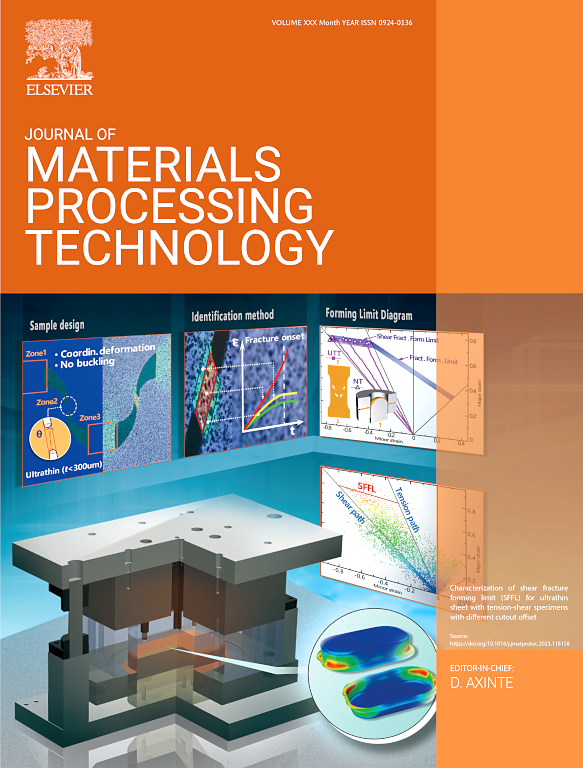Multi-material laser powder bed fusion additive manufacturing of architecturally designed dual-phase heterostructures using heterogeneous high-entropy alloys
IF 6.7
2区 材料科学
Q1 ENGINEERING, INDUSTRIAL
Journal of Materials Processing Technology
Pub Date : 2025-02-01
DOI:10.1016/j.jmatprotec.2024.118708
引用次数: 0
Abstract
Since the concept of high-entropy alloys (HEAs) was introduced, the development of HEAs with synergistic strength and toughness has posed a significant challenge to researchers. Traditional approaches based on random biphasic solid-solution designs often suffer from high variability and poor controllability. In this study, a novel method for multi-material laser powder bed fusion (MM-LPBF) with staggered printing was developed. Using AlCuCoCrFeNi-HEA and MnCoCrFeNi-HEA powders as starting materials, three heterogeneous bi-metallic structures were fabricated. These include staggered multi-layer planar, staggered multi-layer rotating grating, and staggered multi-layer checkerboard structures. The printed bi-metallic structures exhibit a dual-phase heterogeneous composition, consisting of fine body-centered cubic (BCC) crystals and coarse columnar face-centered cubic (FCC) crystals. The interfaces between the dual phases are firmly bonded by transitional “dual-phase intercalation”. Experimental evaluations demonstrate that these structures possess enhanced interfacial strengthening and crack suppression, particularly the staggered multilayer checkerboard structure, which exhibits remarkable impact resistance and energy absorption across multiple reinforcement mechanisms. This study provides valuable insights for the field of metal-based multi-material additive manufacturing, offering new perspectives and potential applications for the future design and fabrication of diverse materials.
求助全文
约1分钟内获得全文
求助全文
来源期刊

Journal of Materials Processing Technology
工程技术-材料科学:综合
CiteScore
12.60
自引率
4.80%
发文量
403
审稿时长
29 days
期刊介绍:
The Journal of Materials Processing Technology covers the processing techniques used in manufacturing components from metals and other materials. The journal aims to publish full research papers of original, significant and rigorous work and so to contribute to increased production efficiency and improved component performance.
Areas of interest to the journal include:
• Casting, forming and machining
• Additive processing and joining technologies
• The evolution of material properties under the specific conditions met in manufacturing processes
• Surface engineering when it relates specifically to a manufacturing process
• Design and behavior of equipment and tools.
 求助内容:
求助内容: 应助结果提醒方式:
应助结果提醒方式:


